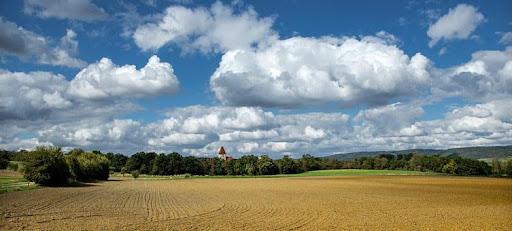
 Loading... Please wait...
Loading... Please wait...Save Money. Grow Your Own!
Fast Plain Box Shipping.
We ship to the US & Canada.
Posted on 19th Sep 2022
Farmers in many parts of the world struggle to keep their crops alive due to drought conditions. In some cases, they have been dealing with these conditions for years. There is no one-size-fits-all solution for this problem, but here are a few tips that may help farmers protect their crops and livelihoods in the coming years.

One of the things that farmers can do to combat drought is to invest in an irrigation system. This will help them keep their crops hydrated even with little rainfall. There are many different types of irrigation systems, so it is crucial to choose one suitable for the climate and the crop being grown. For instance, if you are growing crops in a dry environment, you may need to invest in a more expensive system that can provide more water. This system may also require more maintenance, but it will be worth it in the long run.
A significant component of an irrigation system is a pump. In this case, make sure to purchase a reliable one, as it will be working overtime. When you research online, you may come across the link https://www.daepumps.com/pump-applications/agriculture/ which features agricultural pumps you can choose from. One of the things that you need to look for is the warranty to give you a clue of how long the product can last. Also, take note of the customer reviews to see what other people have to say about it. Also, remember that an irrigation system requires regular maintenance, so be prepared to invest time and money into keeping it in good condition.
Mulch is another tool that can be used to combat drought. It helps retain moisture in the soil, which can be beneficial for crops during drought. One common type of mulch is straw, which can be easily found on most farms. You can also use wood chips, leaves, or even newspaper. Wood chips and leaves will decompose over time, so they must be replaced regularly. Newspapers will last longer, but they may not be as effective at retaining moisture.
You can apply mulch around the base of plants or over the entire field. It is vital to ensure that the mulch is applied evenly and at the correct depth. The important thing is to ensure that the mulch is thick enough to retain moisture but not so thick that it prevents air and water from reaching the roots of the plants. Too much mulch can also promote fungal growth, so it is crucial to find the right balance. It is also important to remember that mulch needs to be replenished regularly, so check the mulch level around your crops and add more when necessary.
Before planting anything, it is crucial to test your soil. This will give you an idea of the available nutrients and how much water your plants will need. There are many different ways to test your soil, but a standard method is to take a sample and send it to a laboratory. This will give you an accurate reading of the soil's nutrients. It is also essential to test your soil for moisture content. This can be done with a moisture meter or by taking a sample of the soil and squeezing it in your hand. If the soil forms a ball, it has a high moisture content. If it crumbles easily, the moisture content is low. When you know the nutrients and moisture content of your soil, you will be able to determine how to best care for your crops. This information will also be helpful when you are choosing the right type of fertilizer.
Another tip for farmers is to use drought-resistant seeds. These seeds have been specifically designed to grow in dry conditions. They are usually more expensive than traditional seeds, but they can be worth the investment if you are farming in an area prone to drought. There are many different types of drought-resistant seeds, but one of the most common is sorghum. Sorghum is a type of grass that is native to Africa and Asia. It is known for its ability to tolerate drought and poor soil conditions. You can talk to a local expert or research online to find the best option for your needs.
Finally, it is vital to monitor the weather conditions to protect your crops from drought. This will give you an idea of when to expect dry periods and how long they will likely last. You can use a weather station to track your area's temperature, humidity, and rainfall. This information will be helpful when you are making decisions about irrigation and planting. By monitoring the weather, you can ensure that your crops get the water they need to survive.

Drought is a major problem for farmers, but there are some things that you can do to combat it. These tips above will help you keep your crops healthy and productive even during drought. Rest assured that with a little bit of planning, you can overcome this challenge.